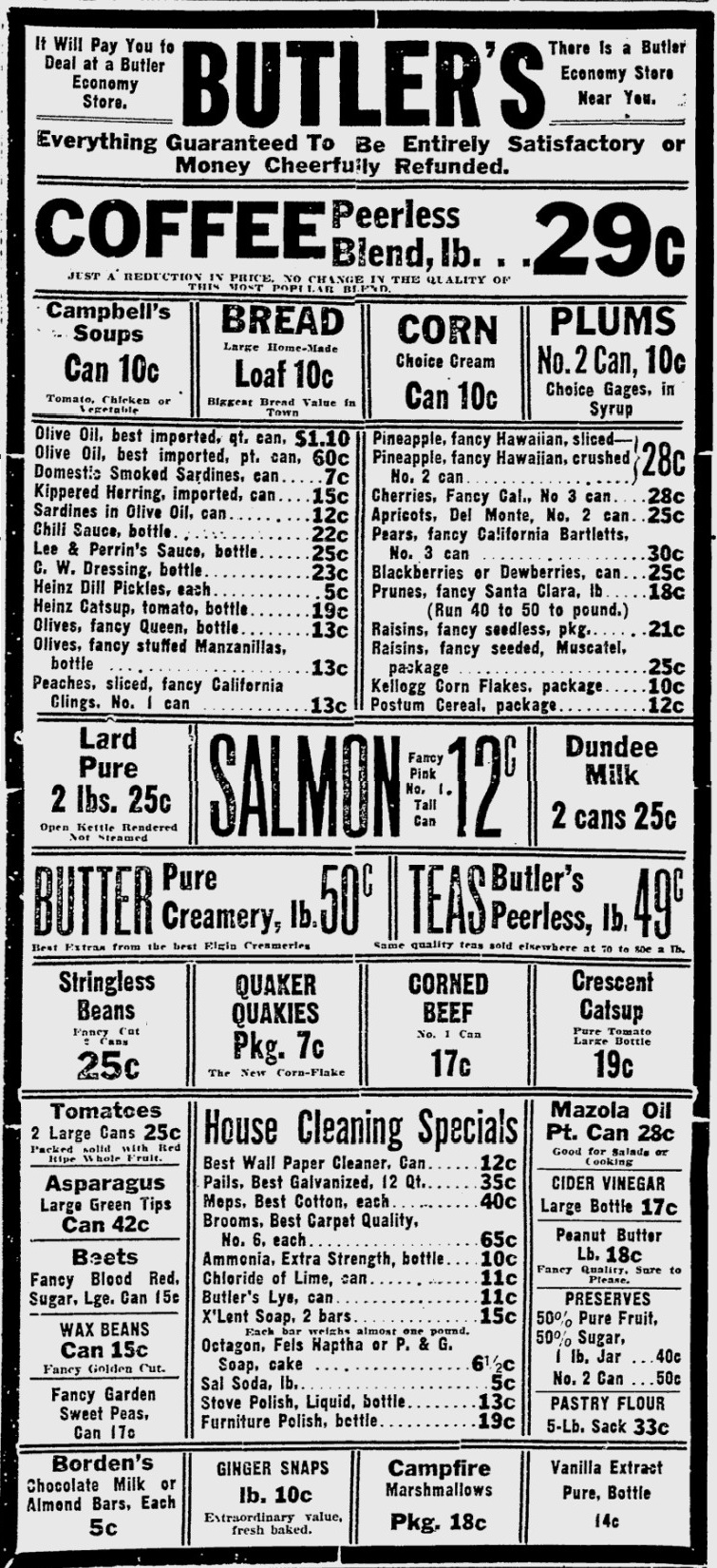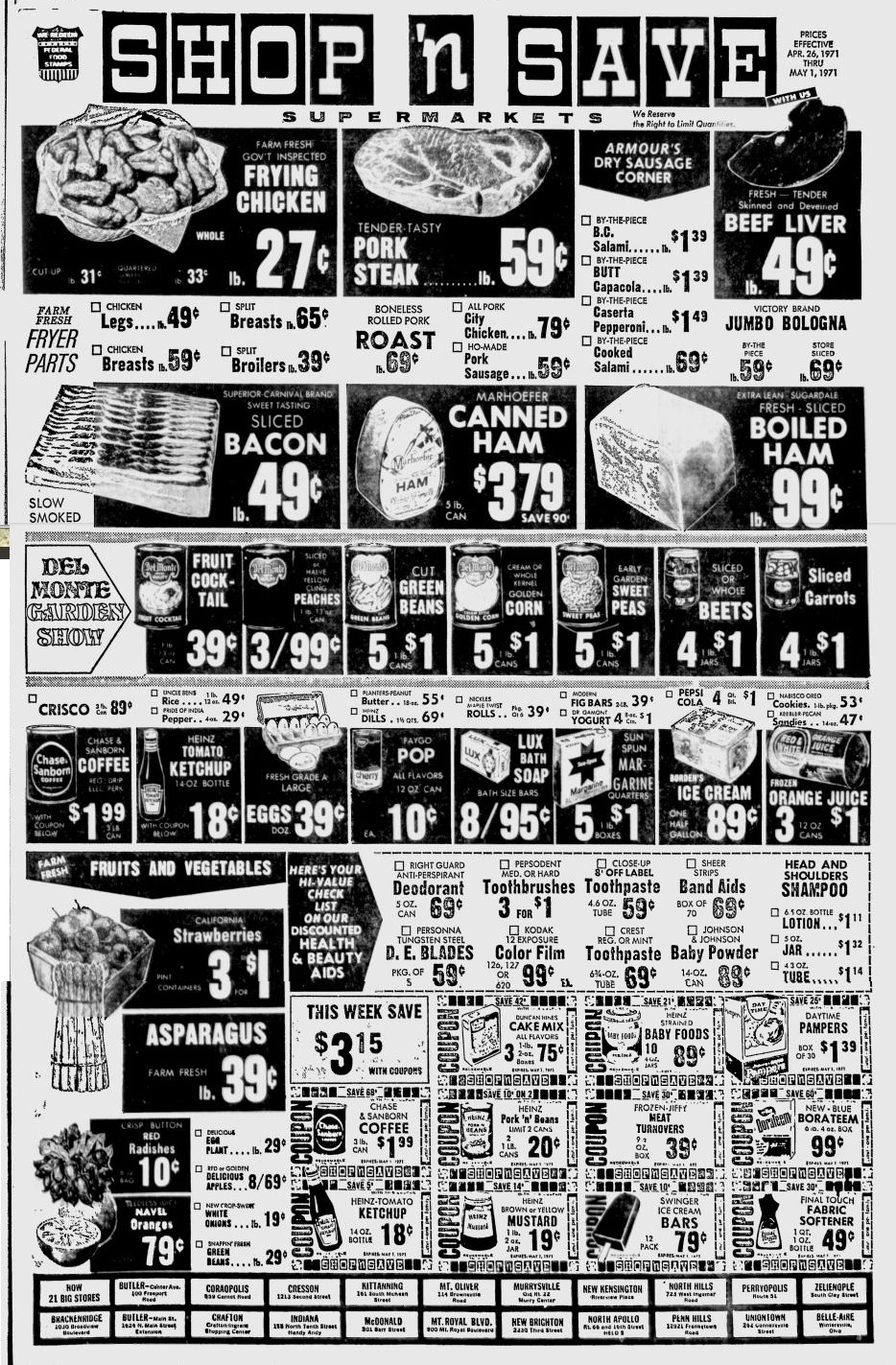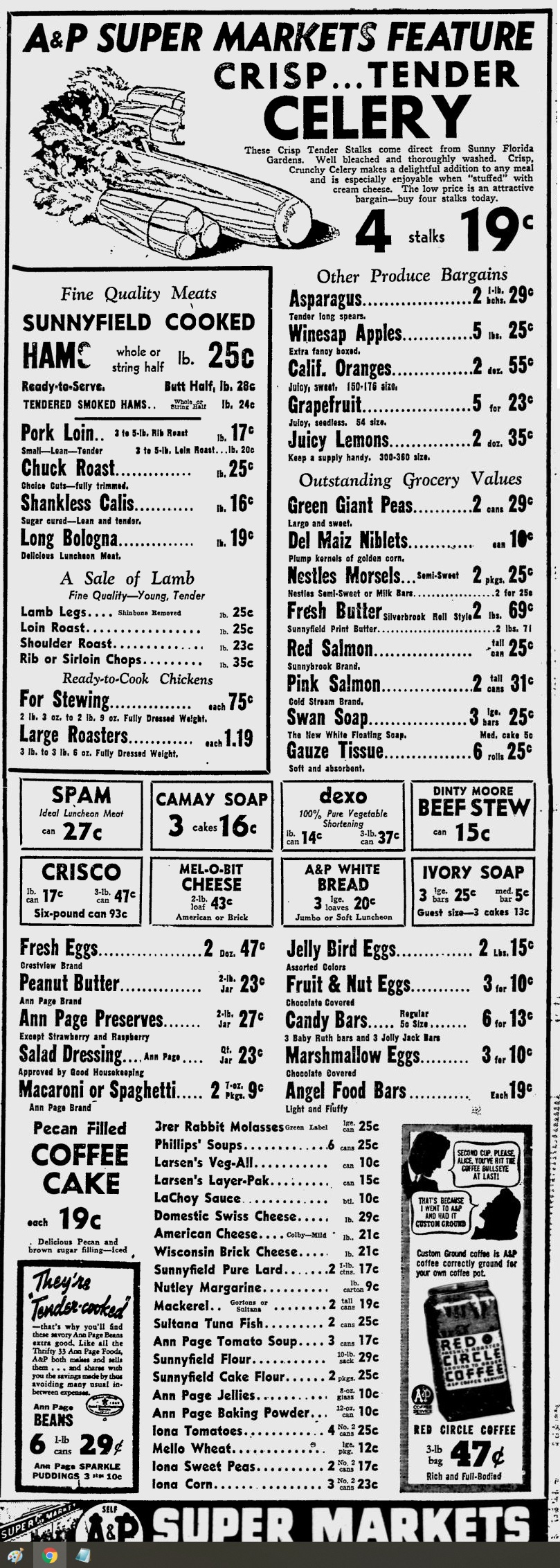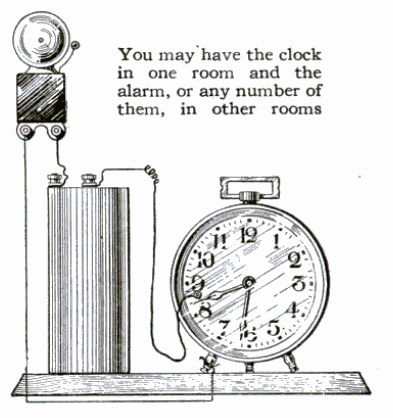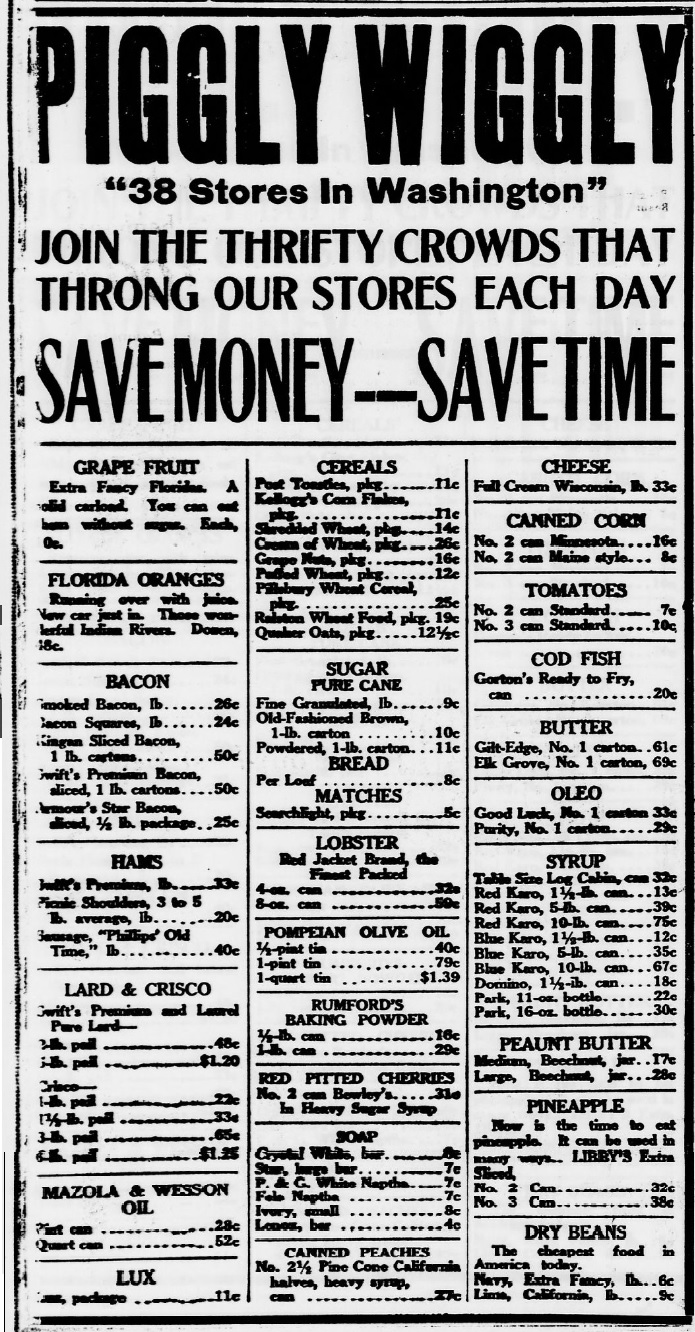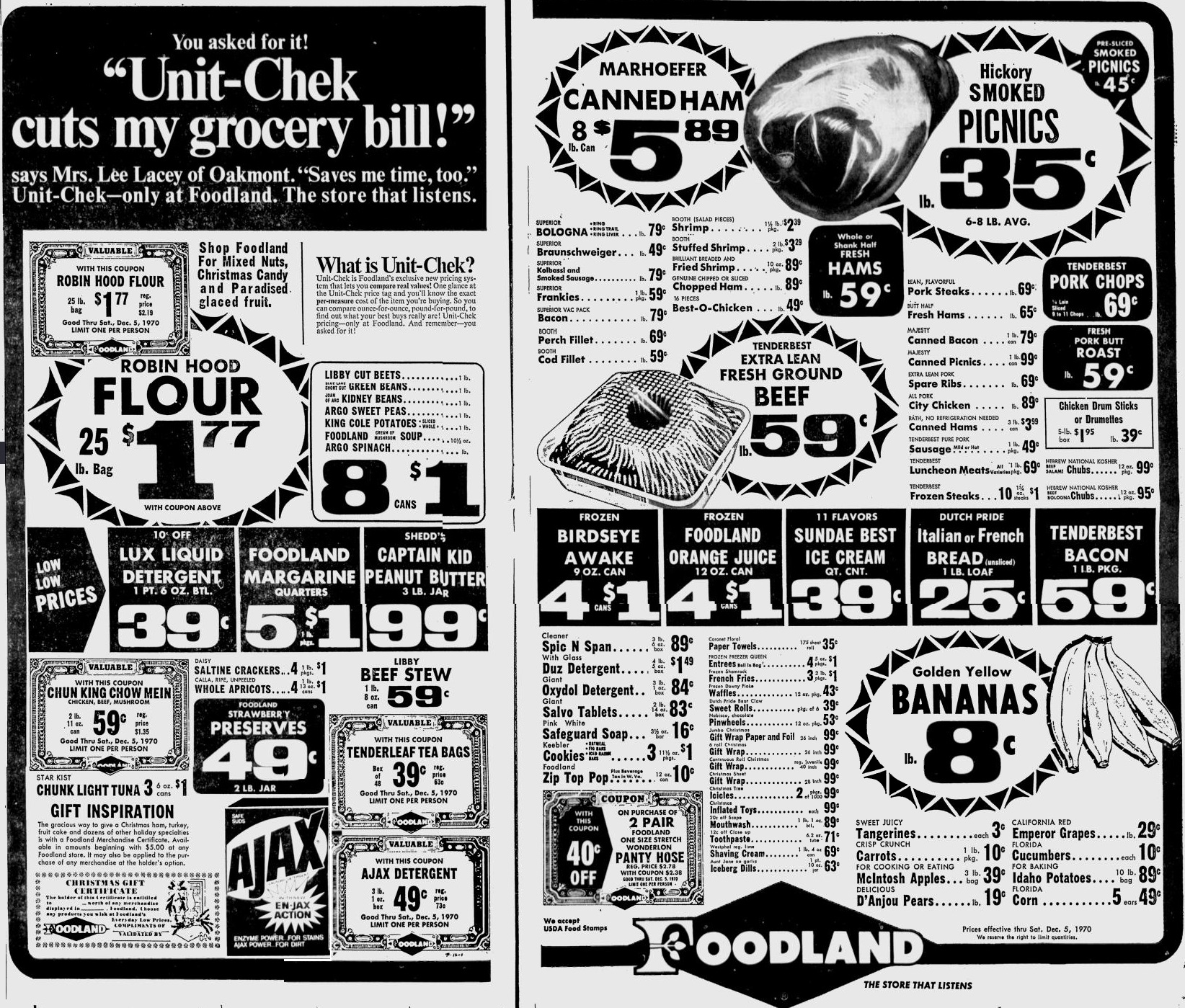 Here’s a snapshot of grocery prices in 1990, from the July 13, 1990, edition of the Pittsburgh Press. You can click on the image to view a larger version.
Here’s a snapshot of grocery prices in 1990, from the July 13, 1990, edition of the Pittsburgh Press. You can click on the image to view a larger version.
According to this online inflation calculator, the dollar was worth just over two times as much then. One dollar in 1990 is the equivalent of $2.06 in 2021 dollars.
Let’s see how some of these prices compare. We’ve taken other looks at historical prices, but since these are “only” 30 years old, we can make apples-to-apples comparisons, since many of the same brand names are still around.
Here are some examples. We show the 1990 price, and the 2021 price at a local supermarket. If you want to take a look at the modern product, the links below are to Amazon.
| Product | 1990 Price | 2021 Price | Increase x |
| Baking potatoes, per pound | 0.27 | 1.19 | 4.41 |
| Vine ripe tomatoes, per pound | 0.59 | 1.99 | 3.37 |
| Watermelon, per pound | 0.14 | 3.49 | 24.93 |
| Whole chicken, per pound | 0.79 | 1.99 | 2.52 |
| New York Strip steak, per pound | 4.19 | 20.62 | 4.92 |
| frozen grape juice, 12 oz. | 0.99 | 1.73 | 1.75 |
| Yoplait Light Yogurt, 6 oz | 0.50 | 0.67 | 1.34 |
| Tropicana Orange Juice, 64 oz. | 2.69 | 4.91 | 1.83 |
| Muenster cheese, per pound | 2.49 | 13.38 | 5.37 |
| Banquet fried chicken, 28 oz. | 1.99 | 8.44 | 4.24 |
In fairness, the 1990 prices were sale prices. And some items, like the watermelon, might have been in season that day. And you could probably shop around and find lower 2021 prices. But the official inflation rate would see all of the old prices multiplied by 2.06. So a few prices went down. And in most of our earlier price comparisons, the prices went down. But I would say that in the last 31 years, the real inflation rate has been more than the “official” rate.
Some links on this site are affiliate links, meaning this site earns a small commission if you make a purchase after clicking on the link.


